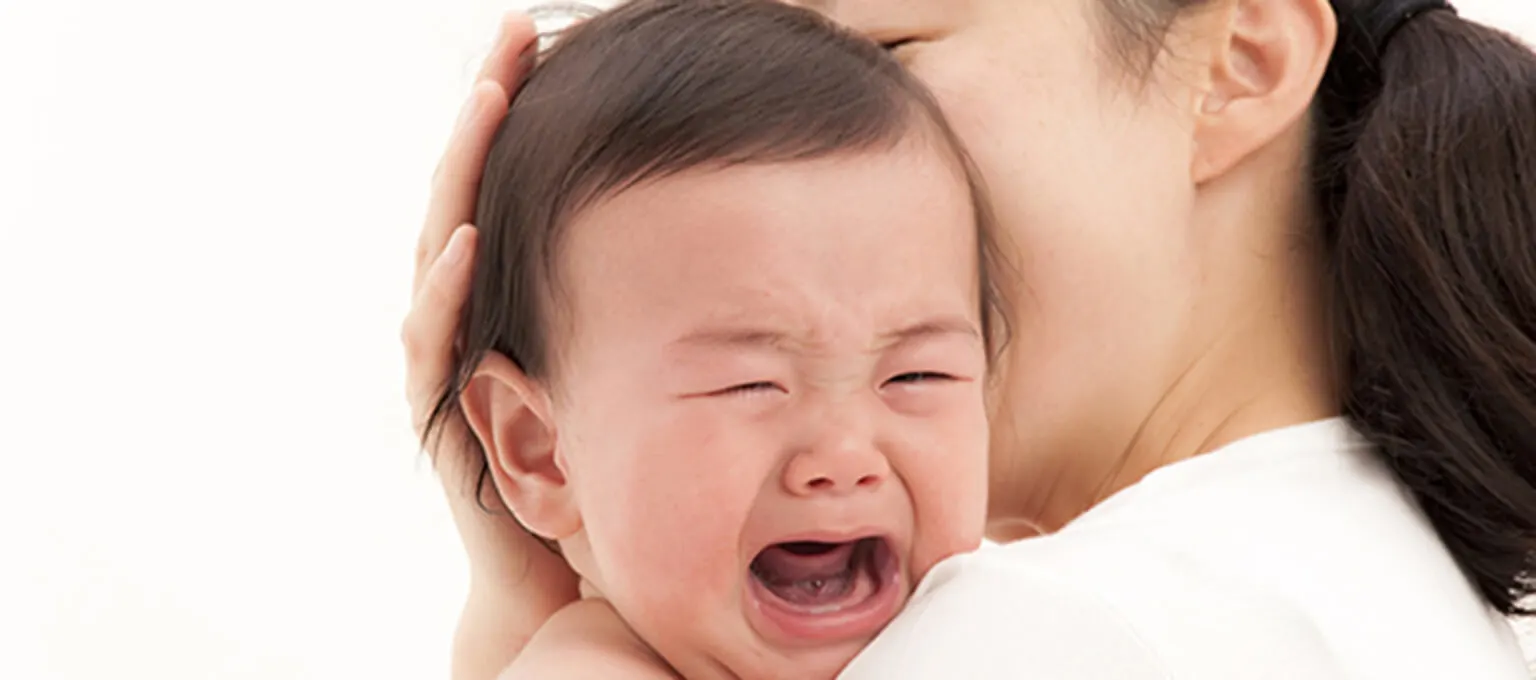Guide to calm down a Crying Baby
Guide to calm down a Crying Baby When your baby cries, it’s her way of telling you she’s hungry, uncomfortable, unsure, or maybe just has a little gas. While you may often understand why she’s crying, sometimes it can be hard to figure it out and comfort her. Keep reading to learn why your baby cries and discover 16 ways to help calm her down when she’s fussy.
Crying: How Babies Talk
How to calm down a Crying Baby: Babies can’t talk, so they cry to tell you what they need. It’s normal for a newborn to cry for one to four hours each day. As a parent, it’s your job to figure out why your baby is crying. It can be hard, but trust yourself you can do it!
How to calm down a Crying Baby
As you spend time with your baby, you’ll start to recognize different cries. For example, you’ll learn what her hungry cry sounds like compared to a cry when she’s upset. Over time, you’ll get better at understanding her cries and knowing how to make her stop crying by responding to her needs.
12 Reasons Why Your Baby Might Be Crying
Hunger: When your baby cries because she’s hungry, it’s her way of telling you she needs food. Babies have small stomachs and need to eat frequently, so if it’s been a while since her last feeding or if she’s showing signs like sucking on her fists or making rooting motions with her mouth, she may be hungry.
Temperature: Babies can’t regulate their body temperature as well as adults, so it’s important to dress them appropriately. If your baby is too hot, she might be sweaty or flushed, and if she’s too cold, she might feel chilly to the touch or have cold hands and feet. Dress her in layers and adjust based on the room temperature.
Diaper Change: Wet or dirty diapers can cause discomfort for babies, leading to crying. Check her diaper regularly, especially after feedings, and change it promptly if it’s wet or soiled. Some babies are more sensitive to wetness than others, so frequent diaper changes can help keep her comfortable and prevent diaper rash.
Overfeeding : Babies can sometimes cry if they’ve eaten too much or if they have reflux, a condition where stomach acid flows back into the esophagus. Signs of overfeeding or reflux include spitting up frequently after feedings, arching her back, or appearing uncomfortable during or after meals.
Food Allergy or Intolerance: If your baby has a food allergy or intolerance, certain foods in your diet (if you’re breastfeeding) or in her formula can cause discomfort or allergic reactions. Common allergens include dairy, soy, nuts, and eggs. Talk to your healthcare provider if you suspect an allergy, and they may recommend dietary changes or switching to a hypoallergenic formula.
Teething: Teething can be a painful process for babies as their teeth start to emerge through their gums. Signs of teething include drooling, chewing on objects, swollen gums, and irritability. Providing teething toys or gently massaging her gums can help soothe the discomfort.
Fever: A fever can indicate that your baby’s body is fighting off an infection. Use a thermometer to check her temperature, and contact your healthcare provider if it’s higher than normal. Fever in infants can be a sign of a serious illness, so it’s important to seek medical attention if you’re concerned.
Overstimulation: Too much noise, activity, or stimulation can overwhelm your baby’s developing senses, leading to fussiness or crying. If you notice your baby becoming overstimulated, try moving to a quieter environment or reducing sensory input to help her calm down.
Boredom: Like adults, babies can get bored if they’re not engaged or stimulated enough. Singing, talking, or playing with your baby can help keep her entertained and prevent boredom-related fussiness.
Tiredness: Some babies cry when they’re tired, especially if they’re having trouble settling down for sleep. Creating a calming bedtime routine and putting her down to sleep when she shows signs of tiredness can help her relax and fall asleep more easily.
Stress or Energy Release: Babies may cry to release tension or excess energy, especially if they’ve been overstimulated or if they’re feeling stressed. Crying can be a way for them to cope with their emotions and regulate their arousal levels.
Colic: Colic is a term used to describe excessive, unexplained crying in otherwise healthy infants. It typically begins around 2 to 3 weeks of age and may last for several hours a day. The exact cause of colic is unknown, but it’s believed to be related to digestive issues, overstimulation, or infant temperament. Strategies like gentle rocking, swaddling, and white noise may help soothe a colicky baby, but it’s important to consult with your healthcare provider if you suspect colic to rule out any underlying medical conditions.
16 Ways to Calm Your Baby When They Cry
In the beginning months, it’s important to quickly respond when your baby cries. This shows them you’re there for them and understand their needs. Don’t worry about spoiling your baby by doing this. It’s not true. Reacting promptly can calm your baby and reduce crying over time.
If you know why your baby is crying, like if they’re hungry or need a diaper change, it’s easier to fix the problem. But sometimes, you might need to try different things to comfort your baby when they keep crying. Through trial and error, you’ll figure out what works best for your little one.
Here are some calming techniques to find out which ones help your baby stop crying the most:
Swaddle your baby: Wrap your baby snugly in a blanket. It helps them feel cozy and safe. Stop wrapping them when they start rolling over, usually around 2 months old.
Take your baby into a dim or dark room: Take your baby to a dim or dark room if they’re too excited. Put them in their crib, on their back, in the dark. If they’re under 2 months old, swaddle them first.
Give your baby a soothing bath. Give your baby a warm bath. It might help them relax.
Hold your baby and stroke their head or gently pat their chest or back.
Burp your baby. Burp your baby after feeding. Hold them against your chest or on your lap and gently pat their back.
Hold your baby close to your chest and take deep breaths. Skin-to-skin contact can comfort them.
Play calming sounds. Use white noise or a fan to create calming sounds.
Play soft music. Play soft music, like classical tunes, to soothe your baby.
Sing or talk to your baby. Talk or sing to your baby in a gentle voice.
Try rocking your baby. Rock your baby in a rocking chair or sway them in your arms.
Place your baby in a swing or bouncer. Put your baby in a swing or bouncer for gentle movement.
Go for a stroll with your baby.Take your baby for a walk in a stroller.
Take him for a car ride. Go for a car ride with your baby in their car seat.
Wear your baby in a carrier. Carry your baby in a carrier while you walk around or do chores.
Have your baby suck on her thumb or a pacifier. Let your baby suck on their thumb or a pacifier for comfort, but wait until they’re at least 1 month old if breastfeeding.
Give him some quiet alone time in his crib.Give your baby some quiet time in their crib if they’re tired. They might cry, but it’s okay to let them cry it out sometimes.



[…] If your baby wakes up crying at night, try giving them a chance to settle back to sleep on their own before going to them. This is part of a sleep training method called the Ferber Method. […]